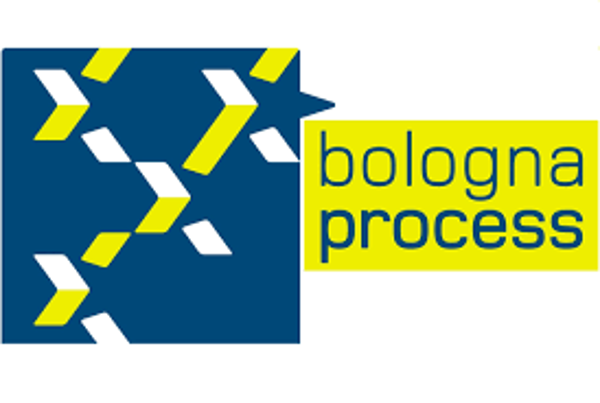Most recently such a commitment was declared in the Final Communiqué of the 2020 EHEA Ministerial Conference, stating that “every learner will have equitable access to higher education and will be fully supported in completing their studies and training“. Similar promises have been spelled out in the last two decades or so, yet little tangible progress has been made.
The concept of the social dimension itself was defined only in 2007: “The composition of the student body entering, participating in and completing higher education at all levels, should reflect the diversity of our populations.”
The 2020 Ministerial Communiqué took though a step forward by the adoption of Principles and Guidelines to Strengthen the Social Dimension, which provides more detailed indications about the measures to be taken. Fostering equity and inclusion to reflect the diversity of society is placed within the responsibility of higher education system as a whole. Such an attribution of responsibility requires elaboration of legal regulations and policy documents to allow and enable higher education institutions (HEI) to develop their own strategies to fulfill their public responsibility.
In addition to this recognition, another statement broadened the definition of the social dimension by stressing that “the social dimension also encompasses the creation of an inclusive environment in higher education that fosters equity, diversity and is responsive to the needs of local communities.” This new element, as it will be recalled later, creates both opportunities and responsibility for single HEI.
It should be added that a recent Communication of the European Commission spells out similar commitments. The European Strategy for Universities (COM(2022)16) underlines the importance of linking the development of HE to key societal challenges ahead and it underscores the promotion of diversity, inclusiveness, gender equality and support for disadvantaged or discriminated groups. The Commission participates in the Bologna Process where it plays a key role by providing expertise and funding. Thus, it is not surprising that the goals run parallel. The competence of the EU in the field of education is limited to support and coordination (art.165 TFEU), and in addition to the initiatives within the EU, the EHEA is a suitable context to exercise this mandate.
Despite the regularly repeated solemn commitments and the perception of social pressure, the social dimension continues to struggle to come forth and become a priority. A formal concern is that the declarations do not impose any legal obligation on the signatories, but there are other, more substantial ones. Countries’ educational systems and structures have evolved throughout centuries, they have deep roots in national traditions and admission systems to HEI show very different landscapes. Furthermore, action should be taken at the level of HE, though most elements leading to limited access opportunities are accumulated during earlier stages of educational career. Due to such complexities, the wording of the commitments is very cautious, much discretion is left to national authorities to fill with content the notion of social dimension. The same applies to the definition of under-represented, vulnerable, disadvantaged groups. The category is a heterogenous one and its composition changes across geographical areas, fields of study, carrier choices. It includes students with low social-economic status; with disability; those with migrant background; ethnic minorities (e.g. Roma students); first-generation students, whose parents are not graduated; women or men can be under-represented at certain fields of study (e.g. women in STEM fields and men in Education); more mature learners who intend to continue their studies (mainly doctoral studies) but who have to reconcile it with work and caring responsibilities; those living in remote or rural areas. Often more elements leading to disadvantage are combined. All these variables make the anyway complex situation challenging in the search of more equity in HE.
The issue is certainly not new, and in particular the US has a long tradition in applying affirmative actions to remedy disadvantages of racial minorities at access to university. After the recent judgment of the Supreme Court quotas cannot be applied, but individual life stories affected because of belonging to a certain race will still play a role in the admission process. The American situation focusing on racial minorities is different from the European context, but nevertheless it provides an experience worth to observe and study.
While waiting for system-level changes, other solutions can be explored by strengthening the local dimension of HE. This might sound as an odd proposal at first sight, since most HEI try to be attractive nation-wide, if not internationally. Yet, improve opportunities for local students and reach-out the under-represented ones, would only boost the enrolment strategies of HEI. For this purpose, a wide range of instruments are available under the so-called third mission activities.
The term third mission was coined at the beginning of the new Millennium. Originally it was used to refer to the contribution of universities (and other institutions of tertiary education) to local economic development. Later the definition has been broadened and enriched, and for today third mission is understood in more general terms as a contribution by universities to economic, social and cultural development. It includes the most various types of activities where universities interact with their external environment. These activities can be divided into three main categories: (i) knowledge and technology transfer, (ii) further education and (iii) social engagement. All of them are connected to the traditional missions of universities: teaching and research, but they go beyond teaching and research by reaching out and cooperating with non-academic stakeholders.
The first category of activities, knowledge and technology transfer, is the one where the contribution of science to economic development is directly measurable in terms of innovation, start-ups, new patents etc. These activities are also the most well-known ones as third mission of universities. The two other categories have gained importance more recently and they include knowledge-based cooperation with members of the society in general. These include life-long education, selected university courses for wider audience, students’ engagement with civil society, public events organized together with local associations or administration, etc.
Third mission activities can be described in general, but specific actions of universities are shaped according to local and regional traditions, characteristics and conditions. By reaching out the local society and economy, universities construct the message that they serve society, science is not a means in itself.
More specifically, third mission activities can contribute to improve opportunities for access to HE. They can target young people at secondary education, those who might have limited chances to proceed with their studies. Widening access is in itself a third mission activity, but it is fundamental to go beyond accessibility clauses.
While quotas, need-based reduction of tuition fee and financial aid are certainly valuable remedies to improve access for under-represented categories, alone they do not cancel the disadvantage accumulated in previous educational career. In addition, implementation of such measures depends on the degree of autonomy single HEI enjoy in the definition of their admission criteria. Instead, other initiatives, like guidance, outreach, mentoring, preparatory courses can be activated by HEI. There is a variety of actions at disposal: Outreach, information advice and guidance can be particularly useful for those, who have limited sources of information about opportunities to access HE, like first generation students or those with migrant background. Peer mentoring by university students or guest lectures delivered by university instructors to high school students offer direct interactions. Preparatory courses and programs can help to even out previous and existing inequalities in educational background of prospective students. They can be general courses (critical thinking, academic writing); intensive academic courses in a specific field, closely related to a degree course; language courses; introductory semesters. They all provide first-hand experience and insight into life at HE, thus they are able to boost motivation and increase ambitions to continue the educational path.
Initiatives to enhance diversity of the student population will work the best if financial and academic measures are combined and, most importantly, if there is a high-level political commitment towards the social dimension of HE. Yet, various measures can be relatively easily activated by single HEI themselves within their third mission activities. To provide support to disadvantaged and under-represented students to pursue tertiary education is not only within the responsibility of HEI but being responsive to the needs of their local communities, as requested by the 2020 Ministerial Communiqué, contributes to their social mission and legitimacy as well.
Per rimanere aggiornato sulle novità di EUblog iscriviti alla Newsletter





















